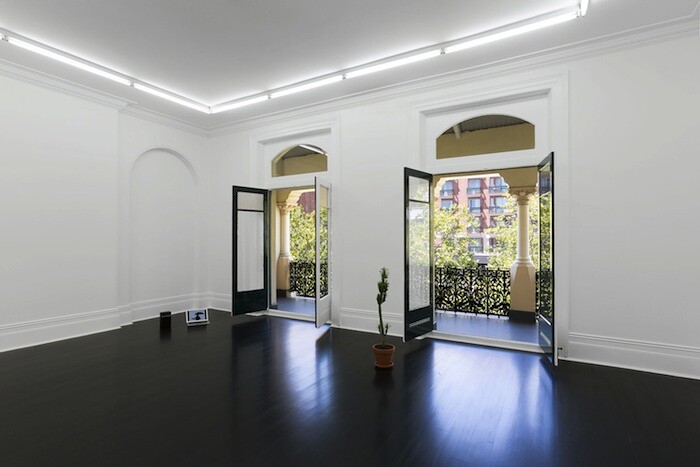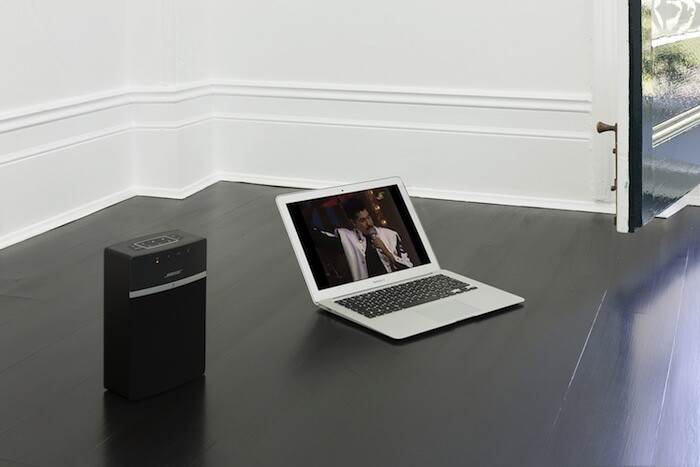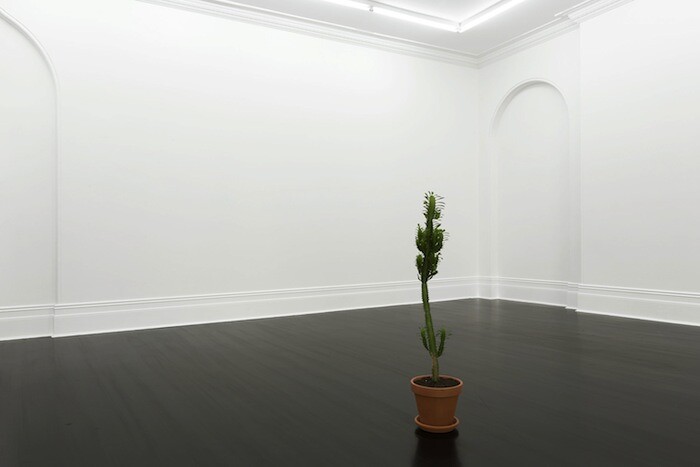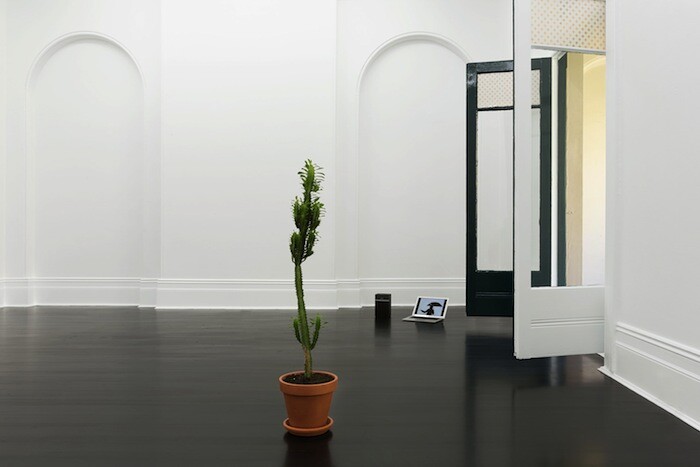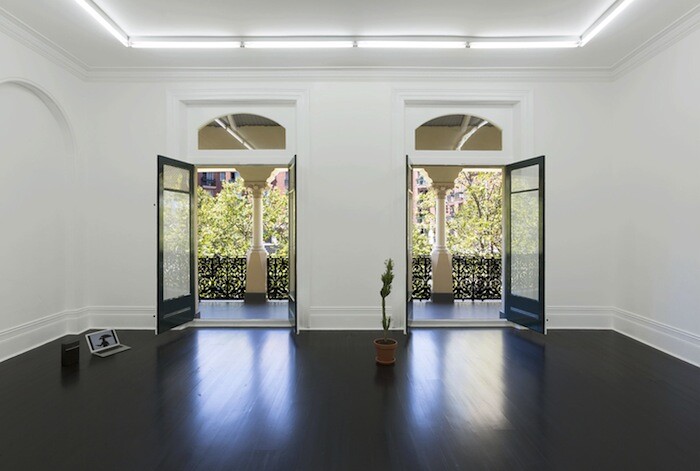A cactus in a terracotta pot stands beside a laptop playing music through a speaker. The balcony doors are wide open. A cool breeze prompts me to the terrace. I see a brick building, leafy trees, and people crossing the street. I can hear foliage rustling. I look around the room, scrutinizing what at first glance seems insignificant. The computer alone on the floor implies someone’s absence. The domestic environment invites me to sit in front of the laptop and watch a music video that is hardly worth mentioning because within a few seconds my eyes turn towards the sky. I see, in the course of few minutes, an airplane, two common mynas, and a magpie fly by. The sky turns gray. It seems that it’s going to rain. Another track starts, a new rhythm that catches my attention. It’s reggaeton, loud and festive. It is 3:50 p.m. in Sydney, or 6:50 a.m. in Berlin.
Based in Berlin, Juliette Blightman is known for calling attention to the subjective experience of time and for using personal objects and images of friends or family members in her performances, installations, portraits, drawings, and films. She is of a generation of artists—also including Kate Newby, Fiona Connor, and Carissa Rodriguez—who create site-specific works engaging with the minutiae of everyday life. “Nightshift,” Blightman’s first solo exhibition in Australia, presents a playlist that the artist accidentally saved during an all-night party with friends in 2015. These recorded songs, and the silences between them, allow her to recreate the party during the day in Australia, corresponding to every nighttime in Berlin, which is ten hours behind. An event only significant for the artist creates a setting in which to experience the passage of time.
Blightman’s sensitive work reflects on the relations in the way we perceive different temporalities, memories, and natural rhythms, including climate and the spinning of the earth. “Nightshift” explores the malleability of time by highlighting how perception and environment shape temporal experience. The work is less about measuring time than about the awareness of change, sequences, and durations, and how our senses navigate them. The changes taking place in the room structure our impressions of time passing, and later form a synthesis that we call a memory. This is, like the playlist, a trace that can exist in the present and yet also, because it persists, belongs to the future. Blightman’s installation extends the duration of a personal event by echoing it. By juxtaposing two time zones, she plays a game of time and temporalities that makes us conscious that, while some are working or jogging others are about to pause the party and step out to watch the silent purple tones of the sky at dawn.
A week later, curious to hear what other songs were playing, I revisited the gallery. I found a very different type of music: an ambient song by Imogen Heap—an artist who also sends secret messages to family and friends through her work. Instead of a video, the song was accompanied by a still image of an autumnal landscape with a dandelion. A fly on the screen seemed part of the scene until it moved its wings. As I was leaving, the same reggaeton song started: it was almost 4 p.m., or 7 a.m. in Berlin. If it hadn’t been for that song, I wouldn’t have thought of the life cycles, routines, simultaneities, and coincidences woven into the fabric of time but seldom noticed.
Blightman’s phenomenological work is modest, quiet, and evocative. More than a composition of objects, it is a meditative space activated by subtle gestures and things easily overlooked. “Nightshift” contemplates the distinctive characteristics of our daily life, in which self, personal relationships, frequented places, routines, and our environment interrelate in a continuous present.

